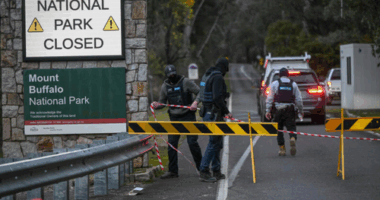Share this @internewscast.com
Australians are finding surgical cures for epilepsy in as little as two years, thanks to advancements in artificial intelligence.Â
This technology, pioneered by the Australian Epilepsy Project, analyzes decades’ worth of data by integrating it with a patient’s medical imaging, family history, and cognitive as well as genomic indicators.
Researchers such as Professor Graeme Jackson have noted that it has successfully identified issues like brain lesions in 10 percent of instances that might have otherwise been missed as normal.

“In cases where little was known previously, we’ve discovered the cause of epilepsy in 30 percent of patients,” stated the clinical director of The Florey.
“It’s medtech of the future, and it is the future of healthcare. “
“We’re in a unique era, where the whole health model will change.”Â
The process leans on several AI components, each of which can be replaced when the technology advances.Â
Right now, the process takes 20 hours and runs on some of Amazon’s most powerful cloud computers.
Anton de Weger, who designed the system, admits it “has been a bit of a challenge.”
“We’ve got 30 years’ worth of advanced imaging research here that we’ve had to embed into a product,” explained the digital and technology lead.
“We take direct images from the MRI and we do a lot of processing on those images, but we also collect data from saliva samples.”
“So we collect about 600,000 data points per person… and then use statistical methods to multiply that up to about 10 million data points,” Wegner said.
“It does sound like the future.”
“We’re finally in the position where we have the computing capabilities and the machine learning technology to be able to analyse these large bits of data and find things that we otherwise couldn’t.”
Amazon Web Service (AWS) has built medical models into its platform to make processes like this easier to set up.Â
The company had already committed to spending $13.2 billion upgrading Australia’s cloud infrastructure between 2023 and 2027.Â
On Sunday, Amazon upped that investment to $20 billion by 2029.Â
AWS CEO Matt Garman announced it as “the largest publicly-announced global tech investment in the country’s history.”Â
“And reflects the incredible innovation we’re seeing from Australian organisations.”‘

Louise Stigwood, the company’s Australian Managing Director of Public Sector, told 9news.com.au, that investment was already having real impact.
“We see a huge demand for AI technology to help solve really complex problems.”
“We support healthcare, education, state government, federal government, as well as defence.”
“(In the case of the Australian Epilepsy Project) we’re using AI to transform patient care. So getting the right care to patients when they need it and where they need it.”
“It means that there is a gift of life that is just priceless.”Â
No one knows that better than Melbourne mum-of-two, Amanda Anderson.
The now 45-year-old suffered her first seizure at 23, and had to give up driving, working and swimming.Â
“My seizures got so much worse after I had my first child – around 2007,” said Amanda.
“I don’t remember my wedding day, I don’t remember holidays we went on because that’s what happens when you’re having constant seizures.”Â
“I wet my pants in public one day. I burned my hand, third-degree burns, while cooking and having a seizure.”
Amanda had surgery at the Austin, and has been seizure-free since 2010. Â
She now works as an advocate for the Australian Epilepsy Project, and says seeing younger Victorians find surgical solutions in as little as two years is extremely gratifying.
“(One patient) was diagnosed with epilepsy, came through our testing, and they found an abnormality. Within two years, he’s now seizure-free.”
“He hasn’t lost all of those years that I did. I’ve lost so many years, so many memories.”
“It makes me feel so happy and so proud to be part of it.”
Any adult who has recently suffered their first seizure can refer to the program at epilespyproject.org.au
It’s hoped the technology could soon help diagnose other forms of brain disease, including depression, concussion and dementia, and dramatically improve access to the best available care, particularly for patients in remote and regional Australia.












